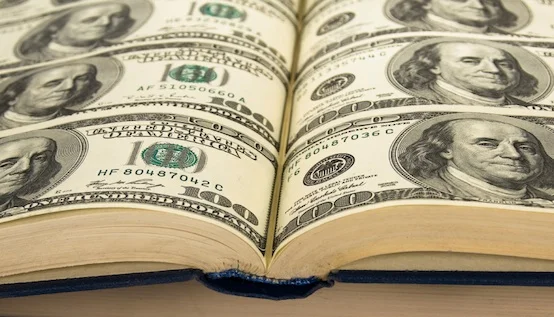 Although ebooks have been around for a long time, many indie authors still puzzle over how to price their ebooks to optimise sales and profitability. Debbie Young, ALLi's Author Advice Center Editor, distills key advice on the subject into 8 top tips.
Although ebooks have been around for a long time, many indie authors still puzzle over how to price their ebooks to optimise sales and profitability. Debbie Young, ALLi's Author Advice Center Editor, distills key advice on the subject into 8 top tips.
Pricing self-published ebooks can seem especially perplexing when trade publishing houses often price their authors' ebooks close to the cost of the print equivalent. Cynics may be forgiven for wondering whether they're trying to direct readers to buy the print book instead as the price difference is so small. But what should self-published authors do?
How to Set Ebook Prices
These 8 top tips will help you get the prices right for your ebooks. Some of the points are specific to Amazon's KDP platform for Kindle books, but the principles apply to other ebook platforms, should you choose, as ALLi recommends, to “go wide”
- Check out the going rate for other indie ebooks in your genre and of the same length: you are likely to find a cluster around a particular price point that your target audience is prepared to pay. Non-fiction ebooks are generally priced higher than fiction. Disregard what the big names in your genre are charging, because famous authors can command a premium which their avid fans will willingly pay.
- Price radically affects royalty rate on Amazon's KDP platform: provided you price your book between $2.99 and $9.99, you will be entitled to a 70% royalty (less a few cents for distribution costs) on each and every sale, with the exception of a few countries that are restricted to 35%. (If you opt for Kindle Select, ie offer your ebooks exclusively on Amazon, you'll get 70% across the board.)
- Sometimes less is more – but not always: although a price set to fall in the 70% range may reap you maximum royalty, there is a breakpoint at which more sales at 35% will earn you more profit overall (and more readers) than fewer books sold at the higher rate. On the other hand, if you're habitually pricing books at the cheapest rate of 99c, when other similar indie books are selling in the $2.99+ bracket, readers may simply assume they're no good and disregard them. A tricky balancing act!
- Price the first in a series cheaper: if you can get readers to take a punt on the first in your series and like what they read, they'll be prepared to pay higher prices for further books in the series – and possibly a premium for each new release, at least when it first comes out. Some authors even make the first in a series free – although many are wary of appearing to devalue their work in that way, or simply can't bring themselves to give their work away for nothing. The choice is all yours!
- Consider special launch prices for pre-orders: alternatively, by setting a lower launch price for a fixed term, say $2.99 instead of your long-term $3.99 or £4.99 for the first month, you may encourage readers to buy sooner rather than later, thus helping kickstart sales for your latest book.
- Let Amazon help you: it has a handy tool on the pricing page of the KDP dashboard that suggests the price at which your book will sell most copies. You don't have to take its recommendation, but it's worth checking out before you make your decision.
- Experiment: you can always change your price at any time, and it's worth experimenting till you hit the sweet spot. Bear in mind it can take a while for price changes to be rolled out to Amazon sites around the world, so don't judge the results too hastily. Also, if you're with KDP Select, you can use the Kindle Countdown tool which varies prices for the course of a set period promotion.
- Obey Amazon's rules: if you're going wide, ie using other ebook distributors rather than remaining exclusive with KDP Select, you are not allowed to charge lower prices elsewhere, and if you do, Amazon is likely to pick you up on it and demand a change. If you repeatedly flout their rules, they have the right to close your account.
OVER TO YOU What other tips can you add to our list? Please feel free to share them via the comments box!
#authors - how to choose the sales price of #selfpub ebooks - by @DebbieYoungBN Share on XOTHER USEFUL POSTS FOR SELF-PUBLISHERS OF EBOOKS





Dear Debbie,
Re: On-demand Self-Publishing–Amazon KDP v. IngramSpark-Cost of Printing–Gaps in Pricing
I have successfully uploaded my book to both Ingram and Amazon. The book will go on sale within the next few days.
The cost of printing and binding with Ingram is not bad at all, given the high quality of the products they can deliver in good time.
However, as regards Amazon, I am gobsmacked by the higher cost of colour printing, which pushes up my prices.
At the moment, there is a significant gap between the prices I have set for the Ingram version and the Amazon version.
Is it necessary for me to synchronise the prices? If so, I have to raise the published prices for the Ingram version, which can be detrimental in terms of marketing.
I would like to invite your opinion about this.
Regards,
Thanks for the information, Debbie!
There are a couple of websites that offer insights into pricing and other strategies:
http://www.genrereport.com/
and
http://authorearnings.com/